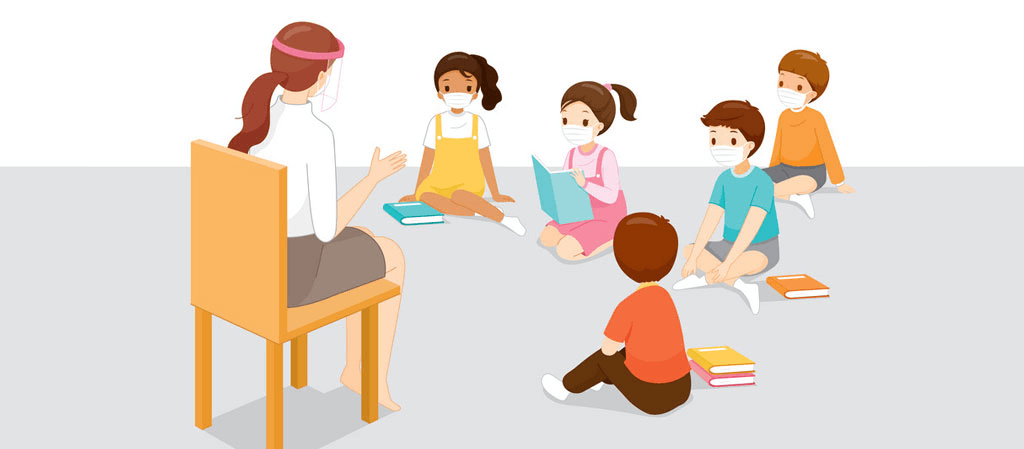Top CBSE Schools in India Incorporating Wellness into Daily Curriculum
Education today is no longer limited to textbooks, exams, and grades. In a world where students face increasing academic and social pressures, wellness and holistic development have become crucial components of modern schooling. Top CBSE schools in India are leading the charge in this transformation, incorporating wellness programs and extracurricular activities for students into their daily curriculum to create well-rounded, resilient, and balanced individuals.
In this article, we’ll explore how India’s best CBSE schools are fostering student wellness through innovative approaches, highlighting the role of mindfulness, physical fitness, emotional well-being, and engaging activities that go beyond academics.
What Is Wellness in Education?
Wellness in education goes beyond physical health, encompassing emotional, mental, social, and even spiritual well-being. A wellness-focused curriculum equips students with the skills and habits they need to maintain balance and thrive in all areas of their lives.
Key Aspects of Wellness in Schools:
Emotional Wellness: Managing stress, anxiety, and emotional challenges.
Physical Wellness: Encouraging fitness through sports, yoga, and physical activities.
Mental Wellness: Developing focus, clarity, and resilience through mindfulness.
Social Wellness: Fostering healthy relationships and teamwork.
By integrating these elements into their daily schedules, top CBSE schools in India are redefining education and ensuring that students are prepared for life, not just exams.
Why Wellness Is Crucial for Students
With academic pressures, competitive environments, and the demands of the digital age, students today face challenges that previous generations couldn’t have imagined. Schools must address these challenges to ensure that students not only excel academically but also grow into emotionally and mentally balanced individuals.
Key Reasons Why Wellness Matters:
Reduces Stress and Anxiety: Helps students handle academic and social pressures.
Boosts Academic Performance: A healthy mind and body improve focus and learning.
Develops Resilience: Equips students to bounce back from challenges.
Encourages Holistic Growth: Balances academics with life skills and emotional intelligence.
Prepares for Life: Teaches habits that students can carry into adulthood.
India’s best CBSE schools are recognizing these needs and tailoring their programs to promote wellness as a core part of education.
How the Top CBSE Schools in India Are Incorporating Wellness
Wellness education is becoming an integral part of the curriculum in the top CBSE schools in India, with schools adopting innovative methods and activities to ensure students’ well-being.
1. Daily Mindfulness Practices
- Morning meditation sessions set a positive tone for the day.
- Mindfulness exercises help students stay focused and reduce stress.
- Breathing techniques are taught to manage anxiety during exams or other stressful situations.
2. Physical Activities and Fitness Programs
- Schools are prioritizing sports, yoga, and other physical activities to promote physical health.
- Regular fitness sessions are complemented by extracurricular activities for kids, such as dance, martial arts, and athletics.
- Health awareness workshops teach students about nutrition and fitness habits.
3. Emotional Wellness Initiatives
- Dedicated counselors and psychologists provide support to students facing emotional challenges.
- Schools conduct workshops on emotional intelligence, empathy, and interpersonal skills.
- Peer support programs create a safe space for students to share and grow together.
4. Creative and Social Engagement
- Art therapy, music, and drama are included in the curriculum to nurture creativity and self-expression.
- Group projects and team-building activities foster collaboration and social skills.
- Clubs for music, robotics, debate, and other interests provide a platform for students to explore their passions.
5. Wellness in Academics
- Schools are adopting flexible teaching methods to reduce academic stress.
- Homework and assessments are structured to prioritize quality over quantity.
- Teachers are trained to identify early signs of stress or burnout in students.
- These practices ensure that wellness is seamlessly woven into daily routines, making it an inherent part of the school experience.
Extracurricular Activities for Holistic Development
Extracurricular activities are no longer considered secondary to academics—they are central to student wellness and growth. The best CBSE schools in India are offering a diverse range of activities to ensure every student finds something that resonates with them.
Examples of Extracurricular Activities for Students:
Sports and Athletics: Cricket, football, swimming, and track events foster physical fitness and teamwork.
Performing Arts: Dance, drama, and music encourage creativity and confidence.
STEM Activities: Robotics, coding, and science clubs nurture curiosity and innovation.
Community Service: Volunteering programs teach compassion and responsibility.
Environmental Initiatives: Eco-clubs engage students in sustainability and conservation efforts.
By providing these opportunities, CBSE schools in India are ensuring that students develop skills and interests beyond the classroom, contributing to their overall well-being.
Success Stories: Wellness Programs in CBSE Schools
India’s top CBSE schools have seen remarkable success with their wellness initiatives. Here are a few inspiring examples:
1. Mindfulness Boosting Academic Results
A leading CBSE school introduced daily mindfulness sessions, which led to significant improvements in students’ focus and academic performance. Parents and teachers reported noticeable reductions in stress levels among students.
2. Yoga and Fitness Transforming Lives
A school in Bangalore incorporated yoga into its daily schedule, and students reported better posture, improved physical fitness, and enhanced mental clarity. The yoga program became a flagship wellness initiative.
3. Art Therapy for Emotional Expression
One school in Delhi implemented an art therapy program for students struggling with anxiety. The program allowed students to express themselves creatively, resulting in better emotional regulation and classroom engagement.
These success stories illustrate the transformative impact of wellness initiatives in education.
Benefits of Incorporating Wellness in Schools
Wellness programs offer a wide range of benefits for students, teachers, and parents alike.
For Students:
- Improved mental clarity and focus.
- Better emotional regulation and stress management.
- Enhanced physical fitness and energy levels.
For Schools:
- A positive and harmonious school environment.
- Higher academic achievements and overall performance.
- Increased student satisfaction and participation.
For Parents:
- Peace of mind knowing their children are supported holistically.
- Opportunities to engage in school wellness programs and events.
The best CBSE schools in India are setting the standard by making wellness an integral part of education.
Challenges and Solutions in Implementing Wellness Programs
While wellness education is gaining momentum, some challenges persist:
Challenges:
- Resistance from traditional mindsets that prioritize academics alone.
- Limited resources and trained professionals for wellness programs.
- Balancing wellness initiatives with academic rigor.
Solutions:
- Training teachers and staff to integrate wellness seamlessly into their teaching.
- Collaborating with experts in mental health, fitness, and wellness.
- Raising awareness among parents about the importance of holistic development.
By overcoming these challenges, top CBSE schools in India are ensuring that wellness becomes a priority for all stakeholders.
The Future of Wellness in CBSE Schools
As wellness education continues to evolve, the future looks promising for schools that prioritize holistic development.
Emerging Trends:
- Integration of AI tools to monitor students’ mental health and well-being.
- Expansion of digital wellness programs to address the impact of technology on students.
- More collaboration between schools and mental health organizations.
The emphasis on wellness is set to grow, ensuring that students in India’s top CBSE schools are equipped for success in all aspects of life.
FAQs
1. Why is wellness education important in CBSE schools?
Ans - Wellness education helps students manage stress, improve focus, and achieve holistic growth, preparing them for both academic and personal success.
2. What types of wellness programs are offered in top CBSE schools in India?
Ans - Schools offer programs like mindfulness sessions, yoga, sports, emotional intelligence workshops, and extracurricular activities.
3. How do extracurricular activities contribute to student wellness?
Ans - Extracurricular activities promote creativity, teamwork, physical fitness, and emotional well-being, balancing academic pressures with engaging experiences.
4. What are some examples of extracurricular activities for students?
Ans - Examples include sports, music, dance, coding, robotics, community service, and environmental clubs.
5. How do parents support wellness education?
Ans - Parents can encourage participation in wellness programs, adopt healthy habits at home, and engage in school-led wellness initiatives.
6. What is the future of wellness education in CBSE schools?
Ans - The future includes advanced wellness programs, AI-driven mental health monitoring, and collaborations with global wellness organizations.
Conclusion
The top CBSE schools in India are redefining education by placing wellness at the core of their curriculum. Through mindfulness, fitness programs, emotional wellness initiatives, and engaging extracurricular activities for kids, these schools are nurturing balanced, confident, and resilient students.
Parents looking for the best CBSE schools in India should prioritize institutions that embrace wellness as an integral part of education. After all, a healthy mind and body are the foundation for lifelong success.

